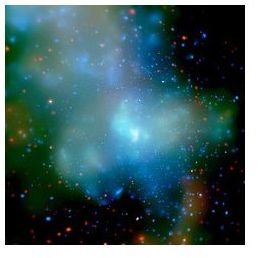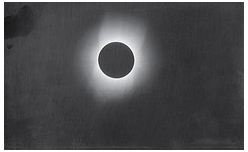Facts on the Next Planetary Alignment in 2012
What are Planetary Alignments?
Planetary alignments are really about vantage point, and in science the term planet alignment can be used in two different ways. From our vantage point on the Earth, the visible planets appear to follow an imaginary line in the sky, known as the ecliptic. This flat circular plane is a reference point describing the apparent path that the sun takes as it travels through our sky in the course of a year.
In actuality, we are the ones moving as the Earth revolves around the sun. Because the other visible planets have similar orbital planes to Earth, they appear to be following the same line when they appear in our sky. As they revolve, sometimes two or more of the visible planets (and or the moon) cluster together or align in a small viewing area of the sky - a fairly common occurrence.
The other type of planetary alignment refers to all the planets forming a straight line outward, if viewed from the sun. Because all planets are tilted on their axis a perfect planetary alignment is impossible. However, considering the fact that the solar system is several billion years old, getting all the planets on the same side of the sun and in the same quadrant of space can and does occur.
Planet Alignments from the Ancients Point of View
In ancient cultures, the study of celestial objects in the sky was used as a guide for life. Knowledge of Mercury, Venus, Mars, Jupiter and Saturn were already known, since these planets are visible to the naked eye. Though scientific understanding of the universe was crude by our standards, ancient observers of the sky accurately calculated planetary motions, created calendars and set up early observatories.
To these early sky gazers however, religious beliefs played a major role in how they viewed the sky and often, ancient astronomers were priests. To them the bright planets wandering around our sky seemed god like in nature. Our ancient ancestors invented astrology and named the planets after their gods. The movement of the planets was used to foretell good and bad events and a planetary alignment was given significant attention. The interpretation of these occurrences could trigger a wedding, a political coup or an assassination of a ruler.
As scientific understanding expanded with the growth of modern astronomy, predictions of bad omens from planetary alignments was given less credence. Ironically, as technology and scientific knowledge continued to expand in the later part of the 20th century the fear and mysticism surrounding the next planet alignment began to gain more attention and believers.
Modern Planetary Alignments
The truth is that planet alignments come and go all the time but life as we know it, keeps on. Take a look back at the planetary alignment on February 4, 1962. It featured a rough line up of the Earth, Sun, Moon, Mercury, Venus, Mars, Jupiter and Saturn as well as a total solar eclipse. History shows that the aligning of these planets is fairly common, around every 50 to 60 years. A similar alignment took place on May 5, 2000 and was known as the “Grand Alignment.”
Not all supposed planetary alignments are actually true. Doomsayers have reported that the next planet alignment will occur on December 21, 2012. End of world predictions have accompanied this supposed alignment, strengthened in part by the Mayan calendar ending in 2012. Even though there is no planetary alignment in 2012, this hasn’t stopped unscrupulous individuals from cashing in with books and web sites proclaiming the end of the world and selling survival kits.
The Pseudo Science of Planet Alignment

Regardless of the type of planetary alignment that occurs, the pseudo science gets all the attention. Doomsayers have predicted that with planet alignments Earth’s gravity would be affected and result in massive calamities and catastrophes. These alignments have been accused of having the power to cause earthquakes, biblical level floods, giant tsunamis, volcanic eruptions, rip the planet apart, pull us out of our current orbit and are even interpreted as a sign of the apocalypse.
Even if all the planets were perfectly aligned, their distance from the earth makes their gravitational pull and effect on our tides so slight as to be negligible. The Sun as the most massive celestial body in our solar system and the Moon because it is so close exert a gravitational pull and cause Earth’s tides.
From a scientific point of view, planetary alignments are just an astronomical curiosity. On September 8, 2040, the inner planets Mercury, Venus, Earth, Mars, as well as Jupiter and Saturn of the outer planets will cluster together with a crescent moon. For all those living, this will offer an excellent opportunity to see a beautiful show in the sky and learn more about planetary alignments.
Sources
https://www.astro.caltech.edu/palomar/faq.html#alignment
https://www.etsu.edu/physics/etsuobs/starprty/22099dgl/planalign.htm
https://archives.cnn.com/2000/TECH/space/05/02/planetary.alignment/index.html
https://www.space.com/scienceastronomy/solarsystem/planet_conjunction_000504.html
https://www.space.com/scienceastronomy/solarsystem/planets_align_020402-1.html
https://science.nasa.gov/headlines/y2000/ast30mar_1m.htm
https://www-istp.gsfc.nasa.gov/stargaze/StarFAQ19.htm#q337
https://www-istp.gsfc.nasa.gov/stargaze/Secliptc.htm
https://www.universetoday.com/guide-to-space/the-solar-system/planetary-alignment/
